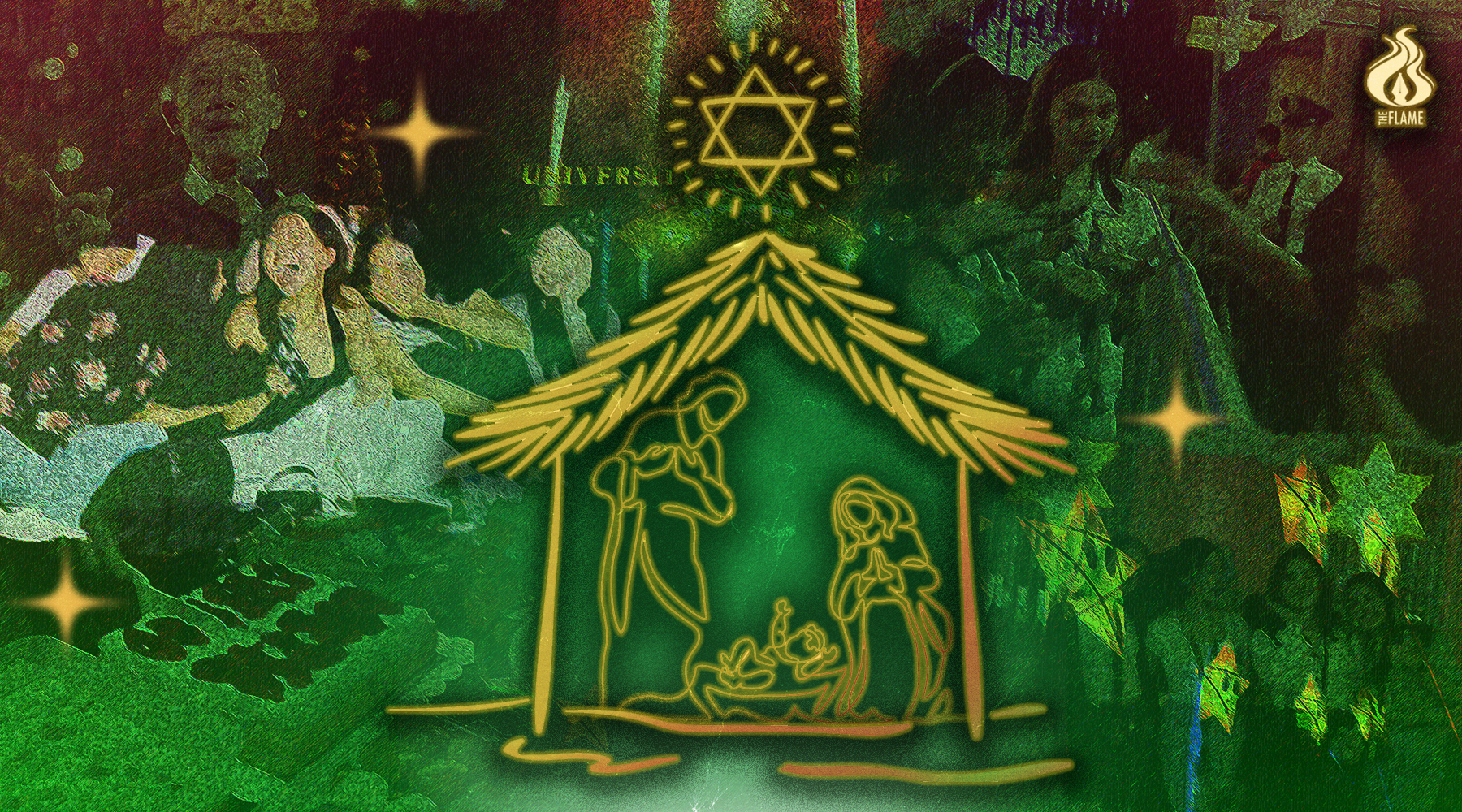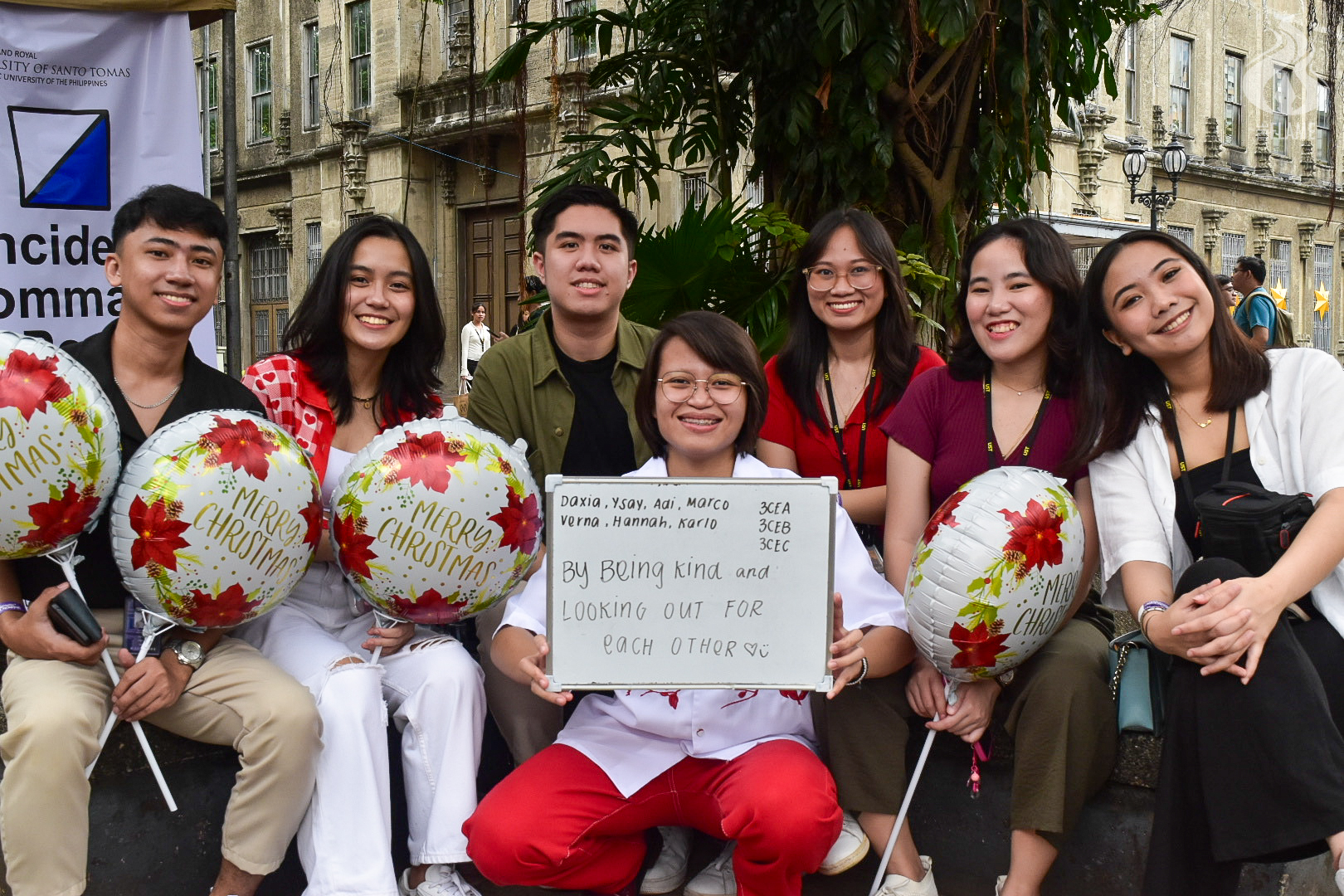
DAYS BEFORE the end of August, a meme showing a peeping Jose Mari Chan circulated on social media, reminding its viewers that the iconic songwriter, who has become a symbol of Philippine Christmas, would again dominate the airwaves soon.
But Chan, the man behind the record-breaking holiday staple “Christmas In Our Hearts,” has also become associated with the beginning of the so-called “ber” months, the unofficial start of the yuletide season in the Philippines.
The predominantly Christian country has earned the reputation of having the longest Christmas season in the world. As early as September, Christmas carols are heard on the radio, star lanterns’ lights splash over neighborhoods’ balconies and Nativity scenes are set up in malls and other public places.
A number of overseas Filipino workers would plan their vacation leaves so they could come home for noche buena, or Christmas dinner, where mothers cook pots of sweet spaghetti, kaldereta, crispy pata and hamon and elders share stories about the good old days.
On Christmas Day itself, families and friends gather for a salusalo (feast) with homemade dishes and desserts. Children wait for midnight before they can open their gifts, usually before cheering relatives, although some of them receive cash gifts in hong bao, or red money envelopes.
Planning ahead

Filipinos look forward to celebrating Christmas with their families regardless of socioeconomic and demographic distance. According to Asian studies professor Lino Baron, the anticipation is tied to the need to unwind from the hustles of everyday life.
“September was just a concept of Filipino psychosis. It was more of psychological, it was more of commercial,” Baron said.
“It is not really found in other parts of the world. That makes it unique because we [Filipinos] like to invent.”
The preparation for Christmas, Baron pointed out, is also manifested in mainstream media outlets, which conduct a 100-day countdown every year.
“Your generation [Generation Z] started counting down Christmas when the malls started . . . [the malls started] to put trimmings and decorations, started putting Christmas decorations and putting pipeline music of Christmas carols to entice people to start buying their Christmas gifts early,” the professor said.
A typical Filipino home is decorated with the parol (lantern), belen (
The parol, which symbolizes the star of Bethlehem, was one of the first Christmas decorations of Filipinos during the Spanish colonial period.
“During the time of the Spaniards, there was no Christmas tree. . . . We didn’t know Santa Claus. Rizal didn’t know Santa Claus,” Baron said.
The belen, which features the images of Mary, Joseph and the infant Jesus, was also made popular by the Spaniards and adorned the homes of affluent Filipinos.
Christmas trees and other decorations introduced by the Chinese and Americans came later, Baron said.
Sociology instructor Mark Villareal said the four-month Chrtistmas celebration reflects Filipinos’ attitude toward important occasions.
“Filipinos are known to be always looking ahead and preparing themselves for what’s to come, and this is clearly evident in the preparation for Christmas. . . . The industry related to Christmas starts to boom with the increase in demand for various products such as quezo de bola, hamonado, fruit cake, puto bumbong and bibingka,” Villareal said.
“Different types of media would start showing Christmas commercials, and just recently, Filipinos associated Christmas with Jose Mari Chan, creating memes of the singer, reminding every Filipino that Christmas is just around the corner and his songs will be played more frequently,” he added.
Villareal views the playing of Christmas tunes as a “signal” for Filipinos to relish their traditions.
“The start of the ‘ber’ months would be the signal for Filipinos to start playing Christmas songs, [beautify] their houses with displays of Christmas trees, lanterns, and lights,” he said.
Origins

Despite criticisms that the holiday has been dominated by consumerism, the celebration of Christmas will always be linked to the Christian faith, which was introduced by the Spaniards to Filipinos in the 1500s.
Baron said the Augustinians were the first missionaries to enter the country. Novena masses were observed nine days prior to the feast day of the saints.
“Filipino culture is also well known for its celebration of fiestas in honor of a specific saint. We used to prepare and give time and effort to make the feast day joyful,” he said.
“We needed to celebrate the feast of the saints with a nine-day novena that will call [for] a holy mass and procession. Until finally, the concept of Christmas [came about] — Felices Pascuas. When you greet ‘Felices Pascuas‘ in Spanish, that is ‘Merry Christmas.’ “
The nine-day simbang gabi or dawn masses were held to celebrate the bambino, or the baby Jesus. Unlike in Europe, Filipinos celebrate the Holy Mass before sunrise.
“The Filipinos wake up early as soon as the roosters crow at 3:30 in the morning. They now go to the field, [else it will] get late before they go to church,” Baron said.
The practice of eating rice cakes after attending Simbang Gabi served as an alternative for breakfast taken at home.
“[The people] eat rice for breakfast. People come near the church where they [see] vendors selling rice cakes — bibingka, kalamay, sapin-sapin, until bibingka and
Keeping traditions alive

Despite the economic challenges, Christmas remains a bright and colorful occasion in the Philippines, where people can strengthen their bond with their families, friends and colleagues.
However, there are views that the celebration was no longer the way it used to be.
Creative writing sophomore Brandon Capiña, who once lived in a province, said family Christmas traditions had lost their spark.
“Our early celebrations have become bleak ever since we started to grow up. We would only begin to set up the decorations around December, and we don’t usually bring out the Christmas tree anymore. Perhaps it is because we have all started to become busy in the household — me and my siblings with our studies, and my parents with their work,” he said.
Capiña’s family is among those who are fond of adorning their houses with Christmas lights and other decorations. One time, his family had jitters about losing the star that complemented the Christmas tree. His brother had an idea that changed his perception of the holiday.
“We wouldn’t settle for an unfinished Christmas tree, so my brother had a brilliant idea. We just put an angel — I think it was also a decoration, sort of like a doll — and it was one of the most incredible Christmas trees I have ever seen,” he said.
Cherished Filipino Christmas traditions are very much alive in the households of journalism junior John Regala and parent Jasmine Paredes. Regala said he played Christmas songs — his favorite is the Mariah Carey holiday hit “All I Want for Christmas” — while putting up decorations. Paredes has always completed the setting up of a Christmas tree on the first day of September.
“I excitedly prepare my Christmas tree and decorations way before September 1 and think of the theme and outfit to wear on Noche Buena and color of the New Year, too,” she said.
Fiesta, family, friends

The longest Christmas celebration in the world also highlights three Fs that are deeply ingrained in the Filipino psyche, namely, fiesta, family and friends.
Despite difficulties, the holiday is an exception for barrios to paint their town red.
“Filipinos spend their fiestas even though the Filipinos in the barrio don’t have money. They try to really still feel the fiesta spirit. How much more is the Christmas spirit?” Sociology instructor Lee Mark Banaag said.
According to Villareal, the celebration is an effort to make merry in the face of a crisis.
“Poverty, devastation by natural disasters, personal and social problems — we look at the celebration of Christmas as a source of happiness, that amidst difficult times, we can still look forward to being with family and be happy,” he said.
Christmas is also about the family as demonstrated by the noche buena, where people stay at home to share a midnight feast with their loved ones.
“Why is it that every Christmas day is a family day? It is because of the Holy Family,” Banaag said.
“Joseph, Jesus, and Mary are all together on Christmas day. Jesus is the center and the family, so we, too, gave importance to our families on Christmas day,” the instructor added.
Villareal echoed these sentiments, saying Christmas “clearly shows how Filipinos value their family”
“Indeed, Christmas is the most wonderful time of the year,” he said.
For Regala, Christmas is about showering friends and loved ones with gifts and “showing them your appreciation through your presence.”
“It’s exciting because you make plans — Christmas parties or out-of-towns — with friends too. [It is about] being there for the people you love,” he said.
Paredes regards Christmas traditions as very important “because they bind us as a family.”
“We get to preserve, in some way, the Paskong Pinoy culture, and we also get to feel the spirit of love more intensely. I guess it’s also the idea that there is something to look forward to — and personally, such thoughts keep me going.” F – G.E. Ochoa with reports from Arabella Peñaranda



